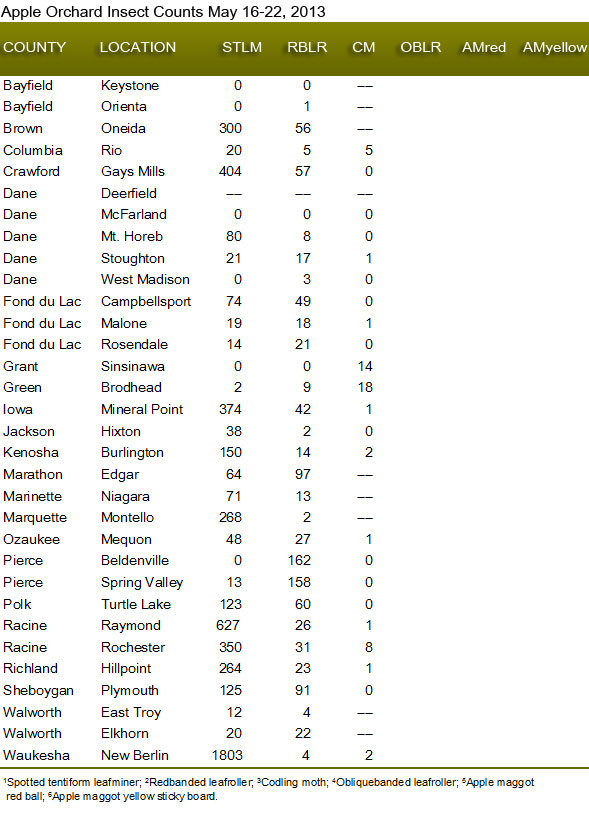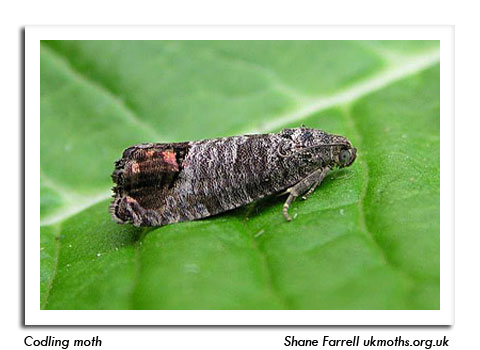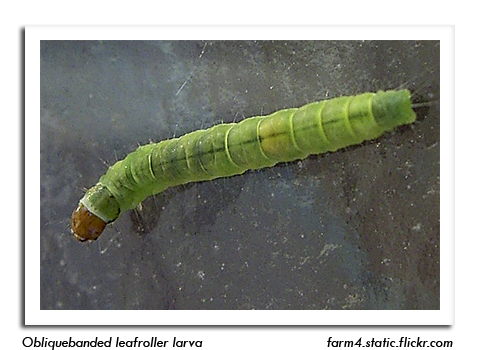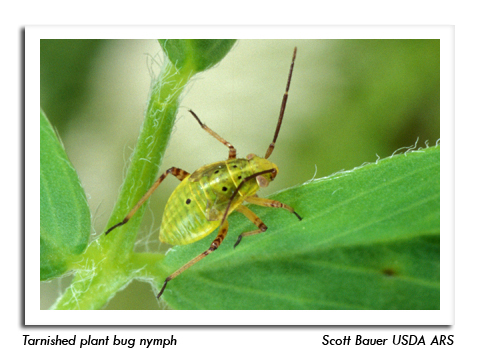
 |
|
|
Fruits
Volume 58 Number 4 Date 05/23/2013 CODLING MOTH - The first moths of the season were registered on the nights of May 19-21 in apple orchards from Burlington in Kenosha County to Malone in Fond du Lac County. Counts ranged from 1-18 per trap and the biofix was established at sites in Grant, Green and Racine counties. Codling moth flight occurs consistently between the hours of 5:00 and 10:00 pm in our region, and winds must be below three mph and temperatures above 62°F during these hours for mating to occur. Since evening temperatures will not be conducive for activity over the weekend of May 25-26, few additional moths are expected until early next week. OBLIQUEBANDED LEAFROLLER - Late instar larvae and rolled leaves were noted this week near Dodgeville in Iowa County, signaling that the first adults could emerge before the end of the month. Most larvae are in the intermediate to late-instars at this time. SPOTTED TENTIFORM LEAFMINER - Moth emergence peaked in the last 1-2 weeks and is now declining. Populations in the southern two-thirds of the state consist mostly of first generation sapfeeder larvae. The recommended scouting procedure is to sample 10 terminals and fruit spurs per tree on 2-3 trees per orchard block 10-14 days after a peak flight has occurred. Sapfeeder mines should be noticeable on the undersides of leaves. The economic threshold is one mine per 10 leaves. REDBANDED LEAFROLLER - Larval emergence has begun at locations where 228 degree days (base 50°F) have accumulated. The first RBLR larvae generally appear around petal fall and this is when scouting should commence. Controls applied at petal fall for other target pests usually provide satisfactory control of this pest. TARNISHED PLANT BUG - Nymphs can be anticipated by early June. Strawberry plants beginning to bloom should be checked weekly for both adults and nymphs. Sprays applied against the small, first and second instar stages are very effective and can eliminate the need for a second treatment. The economic threshold for this insect in strawberries is four per 20 sweeps. -- Krista Hamilton, DATCP Entomologist 





|
|
|